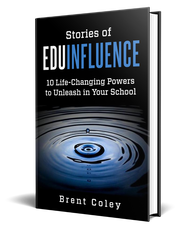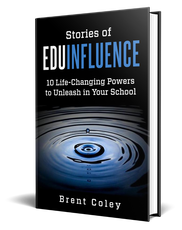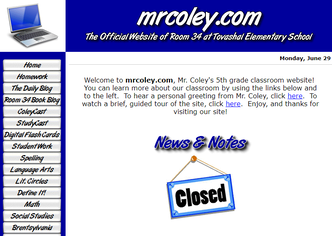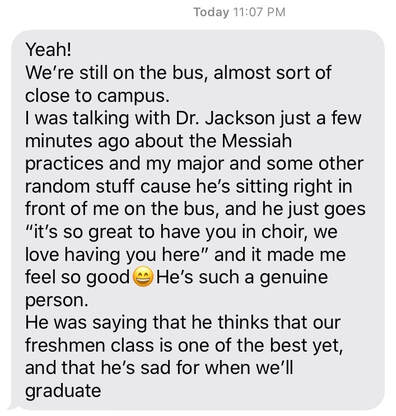 Sometimes the smallest things can provide the biggest reminders. This past Friday rain was in the forecast. For those of you in education, particularly at the elementary level, you know how much joy and happiness rain can bring to the school day (yes, I’m being sarcastic). Along with its diabolical cousins wind and a full moon, there are few things that can wreak as much havoc on a school day as rain. If you know, you know. I knew I wouldn’t have time to hit the El Pollo Loco drive-thru for lunch, and unfortunately I left the house forgetting to bring something from home. So on the way to school, I decided to stop and pick something up at the local bastion of convenience, 7-11. Please don’t judge. I was in a rush. In the store, I grabbed a pre-packaged turkey and cheese sandwich, a bag of pretzels, and then proceeded over to the drink counter. Knowing it was going to be a busy day, I decided I’d need all the caffeine I could get, so I grabbed an empty 50-oz. Double Gulp cup. After filling it with iced tea, I moved down to the counter, grabbed a lid, and, much to my chagrin, discovered the store was out of the large straws. Dang, I thought, knowing the little straws available were only about two-thirds the height of the mammoth-sized container holding my liquid energy for the day. While I didn’t burst into tears or anything, I was a little bummed. I know, I know. It’s a straw, Brent. Not the end of the world. A First World problem for sure. And then I remembered the front seat of my car. Four days earlier, on Monday afternoon on my way home from work, I had stopped at the Starbucks drive-thru for an end-of-the-day treat -- a Trenta Strawberry Acai Refresher, my favorite. When I pulled up to the window, the barista handed me my drink...and an extra large straw. I’ve gotten used to Starbucks’ new drinkable lids, so I no longer use a straw. I casually tossed the straw onto the passenger seat and proceeded to drive home, enjoying my drink on the way. For the next four days, driving to and from work and around town, I would look over and see the straw resting on the front seat. I should probably throw that away, I remember thinking to myself more than once. But for whatever reason, I didn’t. My car isn’t littered with trash, but that unneeded straw remained on the seat for four days, completely defying the typical lifespan of a superfluous item such as this. Until Friday. Until I walked out of the 7-11 in need of this item and all was right with the world again. Or at least I had an appropriately sized straw for my iced tea. So why do I share this story? While it would be easy to dismiss this as luck, I choose to think of it in a different way. I fiercely believe, and these two related incidents beautifully reminded me of one thing -- God cares about and is involved in the little things of our lives. Even the really little things. Like a straw. Would my day have gone OK if I hadn’t had the right-sized straw for my iced tea? Yep. Would I have survived having to remove the lid and drink the last third of my beverage straight out of the cup? Sure would have. But four days earlier, I had been provided with a straw. A straw I didn’t need. I had been given something that, at the moment, was seen as extra, as something to be thrown away. But unbeknownst to me, I would have need of it later. How often does this happen in our lives without us realizing it? How often are we given things, often in the form of having to endure struggle, that will benefit us later? Was getting that straw part of my destiny, God’s ultimate plan for my life? I don’t think so. But is He powerful enough to have orchestrated the events above to have provided for me in the simplest of ways, by giving me a straw? I absolutely believe so. Because that’s how much He cares for me. That’s how much he cares for all of us. I think this is an overly simplistic example of how things often happen in our lives which we may not understand at the time, but help prepare us for something we’re going to experience down the road. In this case, it was a straw I didn’t know I’d need a few days later. In other cases, it may be something less pleasant and much more serious, like a failed relationship that teaches us how to better cultivate the next one. Or being let go of a job you loved, only to make you available for a better one that comes along. So the next time something falls perfectly into place, seemingly by chance, maybe it wasn’t so random. Or the next time you go through a season of struggle, remember that it’s more than likely preparing you for something down the road. Because as one of my favorite verses says, “And we know that in all things” -- ALL things, even the really, really little things -- “God works for the good of those who love him, who have been called according to his purpose” (Rom. 8:28).
2 Comments
Sometimes all it takes to make someone's day, week, month, or even year are a few simple words of encouragement. Check out the short video below as I share a quick story about how a few kind words from one of my teachers came at just the right time.  I talk more about the life-changing power our words can have in Chapter 7 of my book Stories of EduInfluence. If you could use some encouragement conveyed through real stories from the classroom and front office, consider picking up a copy available in paperback, Kindle, and Audible editions. Get it on Amazon here!  Teaching is difficult. Teaching in a pandemic? That's taken the degree of difficulty to a whole new level. The teachers and support staff at my school have been serving our students in a purely virtual model since March. They've been crushing it, but they're tired. Really tired. This past week, I wrote a letter to my staff in an attempt to provide some encouragement. Today while having lunch with my dad and talking about each other's work, I mentioned the letter I had sent. After reading to him what I had written, he urged me to share my message online. He reminded me that the need for the words I wrote is larger than my staff. He told me that, like those in my building, there are other educators out there who need some encouragement. So that's what I'm doing. Below is the message I sent to my staff. Please know this is not about me. I'm just a principal who is trying to support his teachers. There are hundreds of leaders across the country far better than me doing the same thing, and probably doing it better. But if you're a teacher and are struggling, these words are for you. If you're tired, these words are for you. I pray you will be encouraged and reminded of this -- you're not alone. Dear Team,  Email is great. And it’s not. It’s a tool that enables us to electronically communicate with someone on the other side of campus or the other side of the world, with just a few keystrokes and mouse click or a few taps on our phones. Unfortunately, it’s also something that can blur, if not altogether erase, the boundary lines that separate our work and personal lives. Email provides us the ability to stay connected in a way that was unheard of before its invention in 1971. It allows us to work remotely and into the evening. It means we can take care of business from our phones, all while sitting on the couch at home, in line at the grocery store, or at our son’s or daughter’s soccer practice. While there are times when we may need to answer emails away from the office, the problem exists when we let email control us, when we feel like we have to answer emails from home, in the grocery store, at our kids’ practices, or late at night. Email is a powerful tool, but it can control us if we allow it. In my position, I get a ton of email, and I used to struggle with the urge to constantly check to see if I had any new messages. For me, taking back control began with turning off notifications. Whether that was the audible bell that rang on my desktop or laptop each time a new message arrived, or notifications on the email app on my phone and iPad, I turned them off. That’s right. I turned them off. “But you’re a principal,” you might be thinking. “You can’t turn off your notifications.” Yes, I am, and yes, I can. I did it. I turned off my email notifications. And it’s been one of the most important professional decisions I’ve made, one that has substantially helped manage my level of stress and improved my mental well-being. It’s amazing how compelling that little red number in the upper, right-hand corner of the email icon can be, how much power it can possess. When I had notifications on and the red number would appear, indicating a new message had arrived, it was as if that number was whispering to me, “You’re missing something. Don’t you want to know what this new message says?” And more often than not, I gave in to the compulsion and checked my messages, even if it was late in the evening, on the weekend, or while I was spending time with my family. Email was controlling me. Notifications had erased the boundary between work time and personal time. So I turned them off. I banished this digital bully to the virtual abyss with a simple swipe in the app’s settings. Now, let me be clear. I still check my email frequently. I’m a site principal, so I am tasked with keeping the lines of communication open with stakeholders. I’m responsible for responding to email in a timely fashion, and I do. I still check my email. I check it a lot! But I check it on my schedule. If it’s an emergency or something that needs an immediate response, I can be reached by text or phone. District personnel and my school staff have my cell phone number and know not to hesitate to text or call if it’s something urgent. But if it’s an email, I’ve learned that it’ll keep until I check it. It’s important to note that this idea of taking back control is not limited to email. It extends to apps like Remind, Seesaw, ClassDojo, and text messaging. Teachers, these digital tools are fantastic ways to stay in contact with your students and their parents. But please be careful, as they too can control you if you allow them to. Just because you can respond to the message a parent sends at 10:00 p.m. doesn’t mean you should. It’s like feeding a stray cat -- if you feed it, it will keep coming back, expecting you to continue feeding it. In the same way, feeling compelled to respond to a parent’s message late in the evening, well after work hours have concluded, can lead to parents expecting a response right away...even though 10:00 p.m. is clearly outside of the time we should be expected to be working (and would expect parents to answer any of our questions). Bottom line, in my experience, I’ve found that rarely has checking my email at 10:00 p.m. contributed to a good night’s sleep. Whatever is lurking in messages sent late at night will keep until morning. My purpose in writing this post is not to imply that responding to messages in a timely fashion isn’t important. It’s incredibly important! My point is that we have to set boundaries. After work, it’s OK to set the computer, tablet, or phone aside so you can devote your full attention to family, friends, and your own well being. It’s more than OK -- it’s necessary. You can be a great teacher or administrator and still devote time for your personal life. And that’s not something to feel guilty about. If you’ve been struggling with setting boundaries in the area of email and other communication apps, consider this post permission to take back control. Remember, if it’s an emergency, whoever it is will find a way to get a hold of you right away. If not, it’ll keep until morning.  Most people have a favorite restaurant. Ask 20 people to identify their favorite and you may get 20 different answers. Some may name a fine steakhouse like Ruth’s Chris or Morton’s. Fans of sushi might select as their favorite a local establishment serving up this Japanese delicacy. Ask a small child to name his or her favorite and you may get McDonald’s or Little Caesar’s as the answer. To each his own. What about me? What’s my favorite restaurant? If you hadn’t already read the title of this blog post, the answer may have surprised you. My favorite? El Pollo Loco. That’s right. El Pollo Loco. Seriously, Brent? El Pollo Loco? Out of all the restaurants you could choose, your favorite is a drive-thru fast food restaurant serving a variety of inexpensive chicken meals? That’s right. El Pollo Loco. I love this restaurant. It’s affordable. It’s relatively healthy when compared to other fast food options that serve up only burgers and fries. And there’s a location only a mile down the road from my school. I’m not ashamed to say I order lunch here multiple times a week. I get the same thing every time. A $5 Pollo Bowl Combo with flour tortillas and a large tropical iced tea. Mmmm. My mouth is watering just thinking about it. But it’s not the taste of the food that keeps me coming back, though I do enjoy the combination of chicken, beans, and rice. It’s not the value either, though being able to fill my stomach for under six bucks is a fact my budget definitely appreciates. And it’s not the comfortable ambience I used to enjoy before COVID-19 forced the closure of all restaurant dining rooms in my community. So what is it? What pulls me to this restaurant like the Millennium Falcon caught in the Death Star’s tractor beam? (You’re welcome, Star Wars fans.) It’s the avocado salsa, what I affectionately call “green sauce.” I absolutely love it. Seriously, can’t get enough. It’s flavorful with just the right amount of kick. I could drink it like water (which I actually did one time to win a bet, but that’s another story). I love smothering each bite in this liquid slice of heaven. If I hit the drive-thru and discover upon returning to the office they forgot to put my green sauce in the bag, my mood turns grumpy. The birds stop singing, and the day seems darker. The meal just isn’t the same. I go to El Pollo Loco for the avocado salsa. I go for the green sauce. If the restaurant stopped serving it, I can honestly say I wouldn’t eat there as frequently as I do. I’m not sure I would go at all. It’s that important to me. It’s salsa for crying out loud. A side dish. No, it’s not even a side dish. A condiment. It’s a condiment, something extra the restaurant gives away for free, but it’s what keeps me coming back over and over. And over. So let’s tie this into education. Ladies and gentlemen, my question to you is this -- “What’s your green sauce?” What is that extra something that keeps your students wanting to come back to your classroom, to your school? What is it that, figuratively speaking, makes their mouths water when they think about getting to spend time with you? While this question focuses on the “extra,” let me be clear. The main dishes we serve in our classrooms, lessons in reading, writing, math, or whatever subject you teach, are important. Very, very important. It’s imperative we provide our students with rigorous opportunities for learning, that we fill their “stomachs” with nutritious “food.” But my point is this -- the main dish may not be what gets your students up in the morning. It may be that something extra you provide, that cherry on top. It may be the green sauce. So I ask you once again, “What’s your green sauce?”
In the grand scheme of things, these are all actions or gestures that could be considered small. These may not have been the things upon which your professors focused when you were studying to be a teacher. But that doesn’t mean they can’t and don't make a big difference in the lives of those we serve. Don’t underestimate the power of the little things, because more often than we may think, it’s that little something extra, that green sauce, that our students are thirsting for and what keeps them coming back for more. What’s your green sauce?  Want to hear more? I devoted an entire chapter of my book Stories of EduInfluence to the topic of how small actions can make a big impact. Click here to listen to the Audible version of “Chapter 8: The Power of the Little Things." If you’d like to purchase a copy of the book, available in paperback, Kindle, and audio versions, head over to Amazon.  Today the hosting account for my former classroom website (mrcoley.com) expires....and I will not be renewing. Since moving into administration in 2011, the site hasn't been updated, instead serving as an online snapshot of my last year in the classroom. But I haven't wanted to let it go. It's been a passion of mine since 1999 when I first published the site as the culminating project for my master’s degree. What began as a simple site containing an “About the Teacher” page and some student writing and artwork grew into so much more. A daily student blog. Math review videos. Student art galleries. A student podcast. It was the virtual extension of my physical classroom, a digital resource for my students, their families, and eventually other teachers. So I continued to pay to keep it up and running, year after year after year. Each time the renewal bill came due, I avoided the “break up” and pulled out my debit card. I didn't want to say goodbye. I couldn’t say goodbye. But today is the day. The ongoing expense is just too much. As silly as it may sound, this is very, very emotional, like losing a friend. What has been only a click away for over 20 years will suddenly…not be. But it’s time. And BrentColey.com lives on! 
While I may be the educator in the family, it was my 19-year-old daughter, Meghan, who yesterday provided me with a valuable lesson, a reminder of the power a few simple words can possess.
Meghan is in her university's choir, and yesterday she and her fellow vocalists traveled to another college a couple hours away for a choral festival. Late last night, Meghan texted my wife to let her know about something that happened on the bus ride home. Here’s the text she sent.
Dr. Jackson is the Chair of the Music Department at Meghan’s university. I’m sure it had been an extremely long day (notice when Meghan’s text was sent). It was nearly midnight, and I have little doubt Dr. Jackson was tired after a busy day of leading his students. But instead of putting his head back and resting his eyes on the long bus ride home, he chose to strike up a conversation with my daughter -- a freshman, one who isn’t even a music major. He chose to offer up a few simple words of encouragement.
“It’s so great to have you in choir. We love having you here.”
Thirteen simple words, words he may not even remember saying. Yet they were powerful. They made Meghan feel special. They were so meaningful she wanted to pass along her positive feelings to my wife. Thirteen simple words. That’s it. But those words will buoy my daughter for weeks, if not months.
It was a great reminder of the power we possess when we use our words to speak life into those around us. As was the case with Dr. Jackson and Meghan, it doesn’t take much. In this case, just 13 words. Here’s my challenge for you (and me) -- how can you encourage those around you this week? What words can you speak to those in your classroom, in your school, to build them up?
“I’m so glad you’re in my class.”
“You’ve been working so hard, and I’ve noticed. Keep up the great work!” “I’m proud of you.” “I believe in you.”
I guarantee there’s someone around you in need of a few kind words like these. The good news? You have the power to provide them!
|
About BrentBrent has worked in the field of education as a teacher and administrator for 28 years. A former elementary school teacher and principal, he is currently Coordinator of Elementary Education in the Murrieta Valley Unified School District in Southern California. Read more about Brent here. Brent on X (Twitter)Archives
May 2024
Categories
All
|
Photos from somegeekintn, woodleywonderworks, Joybot, British Council Singapore, jseliger2, berkuspic, toddwendy, Alexandra E Rust, skippyjon, crdotx, tharrin, roybuloy, .FuturePresent., Just some dust, frankpierson, Jair Alcon Photography, Luigi Mengato, Muffet, stevendepolo, Pilar Soro, Sander van der Wel, jblyberg, jonathangarcia, DraXus, angeloangelo, Sthetic



 RSS Feed
RSS Feed
